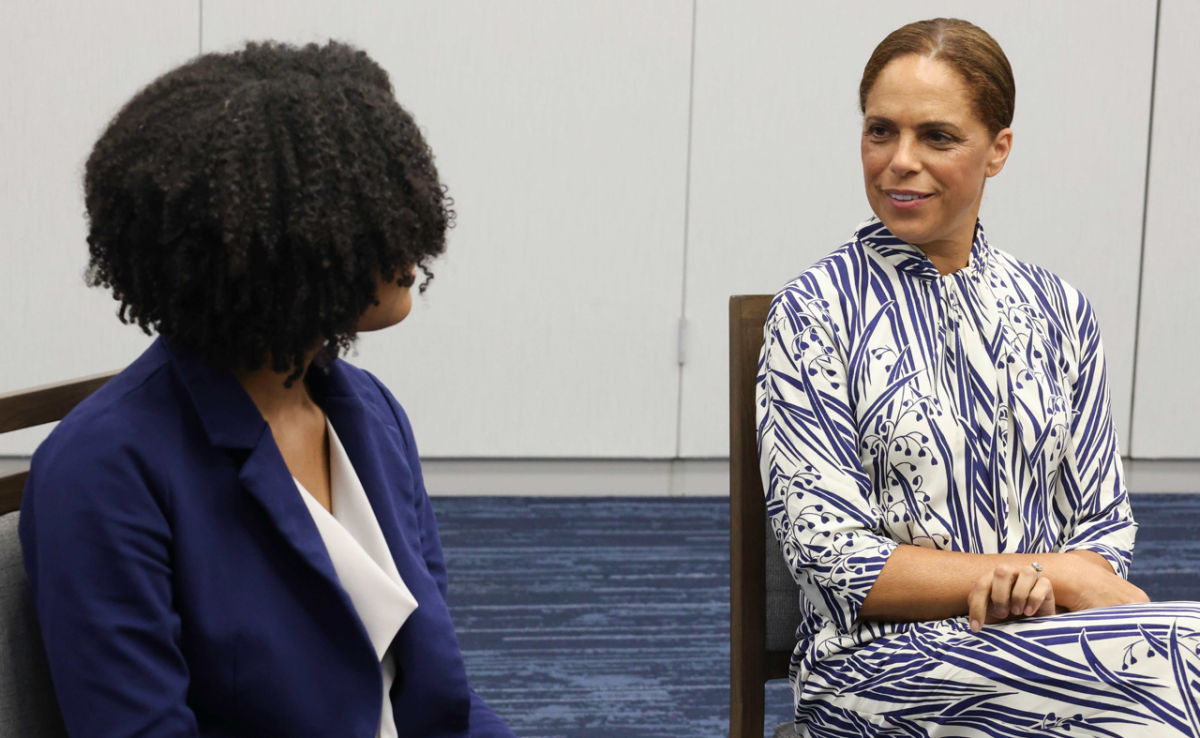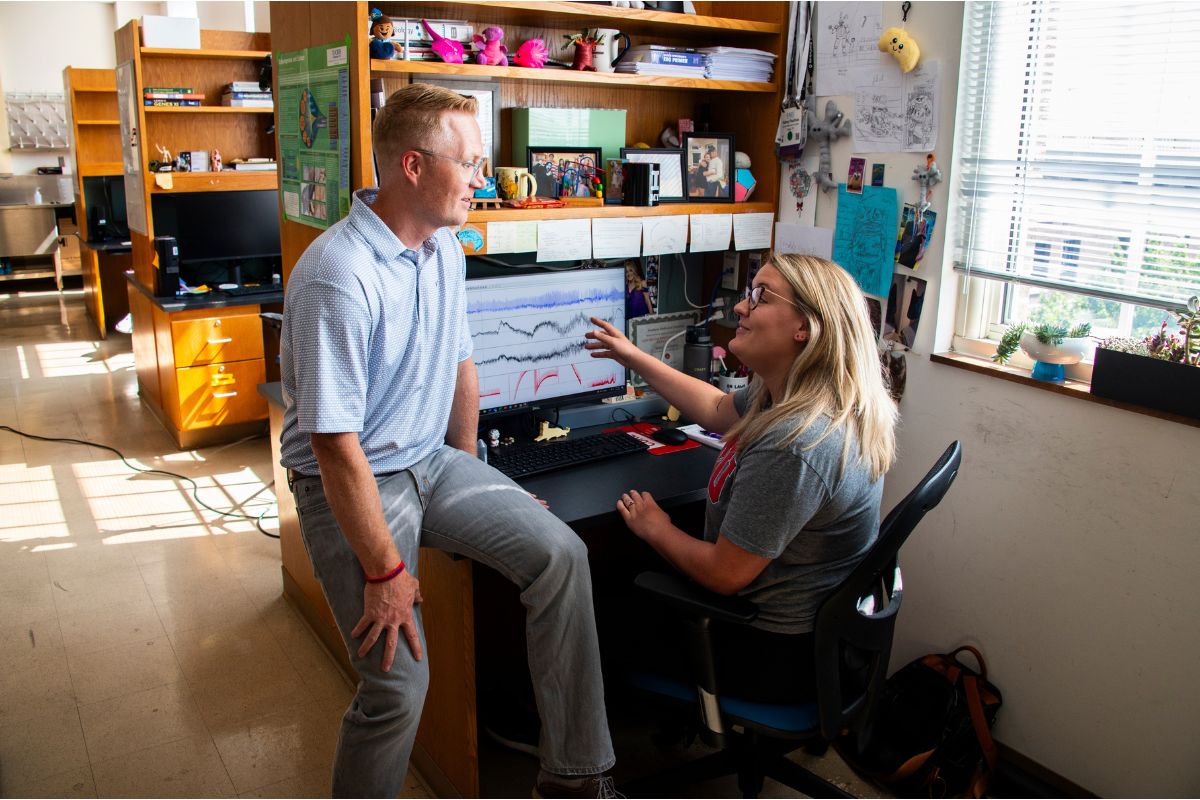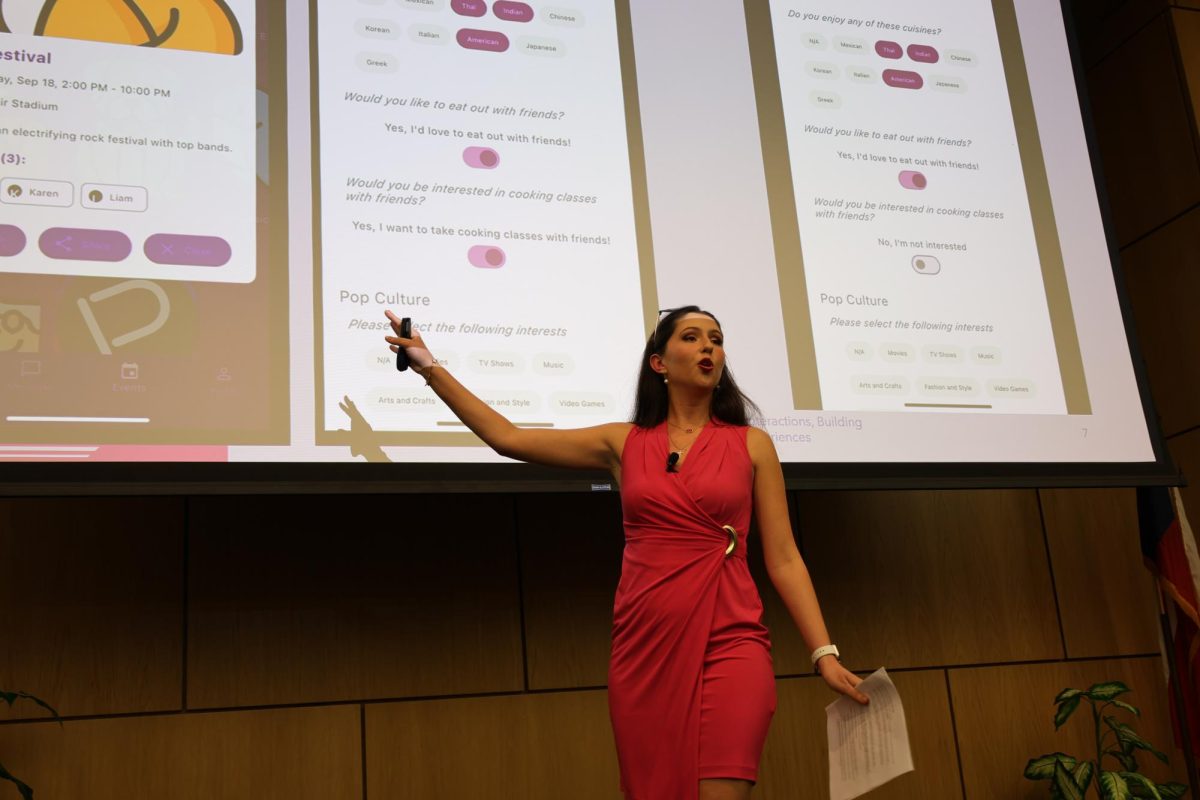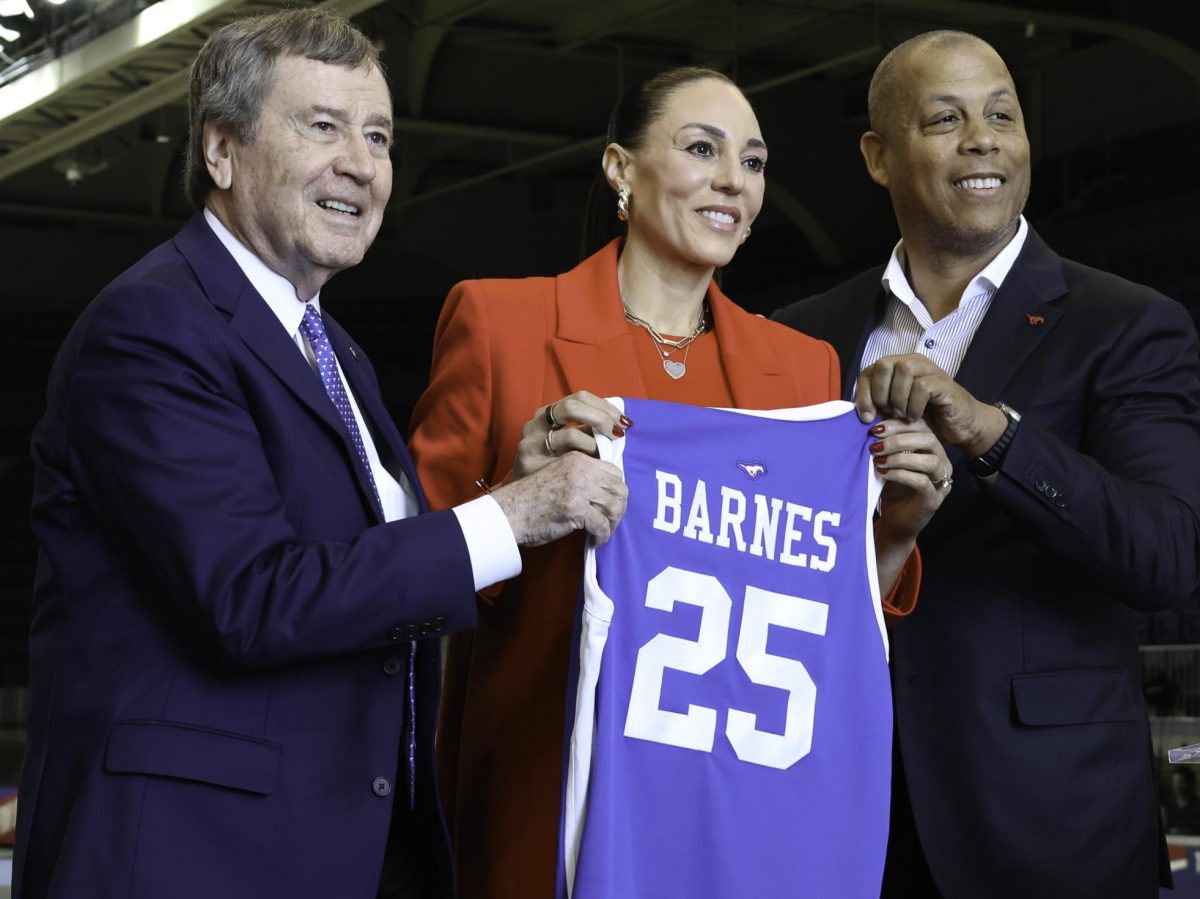So you’ve been here for a few months, a year, maybe even five years. But, how much do you really know about SMU? This year’s homecoming theme, “Dejà vu SMU: Remembering the Past, Living the Future,” invites you to relive the past 95 years of SMU history. Did you know that we were almost called the Bison, Greyhounds, or Pioneers before the Mustangs? What did SMU do to get the “death penalty” in 1985? Or how about the fact that we once lost a football game by 143 points? The story begins almost a century ago.
The Beginning
In 1910, following a conversation regarding the future of Southwestern University in Georgetown, Texas, two men decided to start a new university rather than relocate the existing one. The men, Dr. Robert S. Hyer and Dr. Hiram A. Boaz, later became the first and second presidents of the university. Faced with the decision of locating this new university in either Dallas or Fort Worth, a generous offer of 133 acres of land and a promise of $300,000 swung the pendulum in Dallas’ favor. Southern Methodist University, as it came to be known, received its charter in April 1911.
Modeled after the library at the University of Virginia, construction of Dallas Hall began in November 1912. So why did they name it Dallas Hall? According to A.F. Henning in “The Story of Southern Methodist University, 1910-1930,” the university had collected just enough funds from the city of Dallas to cover the costs of the building, and so it became known as Dallas Hall.Finding a way to transport the materials needed to build Dallas Hall proved challenging. Paved roads did not exist in the area until 1923. Instead, a railroad spur was built off the Houston and Texas Central Railroad main line, which sat where Central Expressway lies today-hence the name.
Dallas Hall opened its doors on Sept. 22, 1915. 35 faculty members were on hand to teach the 706 students that enrolled that year. One of the first students, Umphrey Lee, later became the fourth president of the university. At its opening, Dallas Hall housed the library, post office, faculty offices, classrooms, chapel, administration, bookstore, soda fountain, and the biology and chemistry science labs. As a student of the first class at SMU, you had a choice of majoring in liberal arts, music or theology. Students today can choose from over 80 different majors.
Financial constraints imposed on the university limited construction efforts. In 1915, female students lived in Woman’s Hall, now known as Clements Hall. They lived and dined with President Hyer and his wife, who shared an apartment in the building. To procure housing for male students, the university built three inexpensive male dormitories where the Sigma Chi house stands today. Known as North Hall, South Hall and Rankin Hall, they would burn two years later in 1917.
Despite the university’s financial setbacks, a group of freshmen and transfer students formed a football team, minus the expensive pads. According to Marshall Terry, a professor and SMU historian, our first game resulted in a loss against TCU and, in 1916, we lost to Rice in the worst SMU loss in history, 146-3. And you thought an 11-point spread was bad.
The following year marked another historical event. After debate over several names for a school mascot, including the Bison, Greyhounds or Pioneers, a decision was made after the school’s first librarian, Dorothy Amann, described the football team as “a bunch of wild mustangs.” And so the name stuck. Peruna, whose name derives from a popular and slightly alcoholic medicine of the time, did not exist until 1932.
The first decade of SMU’s history was tumultuous. The university lost 11 students in World War I and during that time, student enrollment fell 30 percent. SMU’s financial troubles continued and, as a result, Dr. Hyer resigned in 1920.
The Expansion
Boaz, who replaced Hyer, presided over the university for only two years, but gained some much needed funding for the school, making it debt-free by 1924. The installation of sidewalks in 1923 allowed students to walk to class on something other than gravel or boardwalks. Fraternities also began building their homes during this time. Kappa Alpha had the first house in 1922, followed by Sigma Chi in 1923 and Lambda Chi in 1924. The old “Frat Row” sat where Blanton and Junkins stand today.
In 1923, Charles C. Selecman replaced Boaz as the third president of the university. Under his leadership, SMU grew rapidly and until the end of his tenure in 1939, the entire campus transformed from an overgrown prairie into a thriving university. Henning said that before major expansion began, a nine-hole golf course once stood between the Virginia and Snider dorms and Mockingbird Lane.
In 1924, a major landscaping operation began and hundreds of trees and shrubs began to dot the campus. For $100 you could dedicate a tree, indicated by a plaque. These trees now shade your daily walk to class and many, if not all of the plaques, go unnoticed as they lie at the bases of the trees. Four fountains given as class gifts used to line the center of the boulevard, but deterioration resulted in their removal many years later.
Rebuilt just eight years earlier, another fire destroyed all three men’s dorms and the brand new $10,000 University Park fire truck in 1926. Completed that same year, Virginia and Snider Halls became the new women’s dorms and Woman’s Hall became Atkin’s Hall, the new dorm for men. According to Virginia-Snider Hall Director Leasa Kowalski, rumor has it that the elephant that sits above the south side door of Snider was put there because C.W. Snider, for whom the dorm is named, collected elephant figurines.
The period from 1926 to 1928 also marked the opening of McFarlin Auditorium, Perkins Hall, Ownby Stadium, Hyer Hall and Patterson Hall. Upon construction, McFarlin Auditorium became the most expensive building on campus. The original backdrop still hangs behind the stage today. Another important addition to the university came with the building of Ownby Stadium. Built where Ford Stadium stands today, it housed the football team until 1948 when games were moved to the Cotton Bowl.
Dedicated to former President Hyer, Hyer Hall became the new sciences building complete with labs and classrooms. Hyer Hall’s compliment, Perkins Hall, initially had only one story. By 1938, SMU had collected enough money to add an additional two stories and a basement resulting in its present form. Construction began on Fondren Library a short time thereafter, and by 1940, the university finally had a library. As mentioned in Mary Martha Hosford Thomas’ novel, “Southern Methodist University: Founding and Early Years,” this was the first air-conditioned building on campus and one of the first in the area. Ironically, in order to counter the declining number of male students enrolling in the 1920s, SMU built a stadium before it built a library.
In 1939, Selecman stepped down and Umphrey Lee became the fourth president of SMU. According to Terry in his work, “From High on the Hilltop: A Brief History of SMU,” his new position coincided with the merging of the two Methodist sects, the northern and southern Methodists. With this merge, dancing was finally allowed on campus, and as tribute, the third floor of the Umphrey Lee building houses the “Grand Ballroom.”
Under Lee, SMU constructed 20 buildings from 1940-1954. Perkins Natatorium served as the university’s main gymnasium from 1942 until the construction of Moody Coliseum in 1956. Future development ceased as World War II erupted, and did not resume until 1950.
After the war, several buildings began replacing the wooden shacks that littered the landscape. Lettermen’s Hall, which housed varsity athletes until Title IX, preceded Caruth Hall, the new engineering home that opened in 1948. A $1 million donation sparked the construction of Fondren Science Building in 1950 and a $7.5 million donation established the entire Theology quad, including apartment buildings and dormitories, in 1951. A large grove of trees complete with a small creek known as Arden Forest, a popular hangout for students, once stood in the area of Perkins Chapel.
In 1954, the School of Business-originally the School of Commerce, established in 1919-found a permanent home with the construction of the Fincher Building. It was originally constructed without the cupola on top, which was added much later, according to Director of BBA Admissions Stephanie Dupaul. The business quad did not reach completion until 1987 with the addition of the Maguire and Crow buildings.
The Master Plan
Inaugurated in 1955, Willis M. Tate became the fifth president of SMU. Tate would run the university for eighteen years. Under his guidance, students received the new Umphrey Lee Student Center which replaced the English gardens, designed by early German professor and campus beautification chair A.D. Schuessler. Tate’s biggest accomplishment, the “Master Plan,” introduced graduate programs and condensed and defined existing schools. Meadows School of the Arts became the new home for theatre, art, dance and journalism majors. The plan strengthened the business and engineering schools and, according to Terry, this was the “final dimension of attaining true university status.”
The growing student body resulted in the construction of a series of dorms. Boaz came first in 1956; Shuttles in 1957; McElvaney, Moore and Mary Hay in 1959; and finally, Morrison-McGinnis and Cockrell-McIntosh in 1964. On an interesting and somewhat ironic note, the Morrison and McIntosh buildings face each other. Ray Morrison, the first football coach, often quarreled with the faculty athletic chair of his time, John S. McIntosh.
The last major construction to take place before 1987 would be the building of the Owen Fine Arts Center in 1965. In the nearly 20 years Tate presided over this university, he faced many major social issues such as the Civil Rights Movement, the assassination of President John F. Kennedy, and the Vietnam War.
Scandal and Rebirth
The next 20 years marked a troublesome time for the university. Almost no buildings were added until 1987, and from 1972 to 1994, four presidents held office.
Scandal erupted in 1985 when the university was found guilty of 36 NCAA rule violations. The three-year probation that resulted became known as the “death penalty.” The worst penalty ever imposed on a university was the result of SMU paying and specially admitting players. Ironically, this had happened before. In 1922, the Southwest Conference accused the university of paying players, and in some instances, bussing in ringers from Oklahoma. Faced with disciplinary action, an investigative committee held a vote and by a 4-3 margin, SMU escaped punishment.
When football returned, the university had changed. As President Turner said in his inauguration address of 1994, “one of the greatest strengths of SMU, as a university centered in the liberal arts, is its ability to adapt to changing times and emerging challenges.”
Since then, the Princeton Review has named SMU one of the “Best Western Colleges” and ranked it fourth for “Happiest Students.” Terry, a professor here for over 50 years, describes the students today as “much more professional,” adding that the university has “benefited immensely from the increased diversity.” His current project, “Loving U,” will share stories from his life and experiences at SMU.
Looking Forward
As SMU nears its 100th anniversary, one can only guess what the future holds. The past five years have brought nine new buildings with even more in the works. Students have come and gone, but with each passing year new experiences continue to add value and substance to the foundation of this university. As Homecoming nears, you are invited to look at not only what is here, but to also relive the past and imagine the near future.








